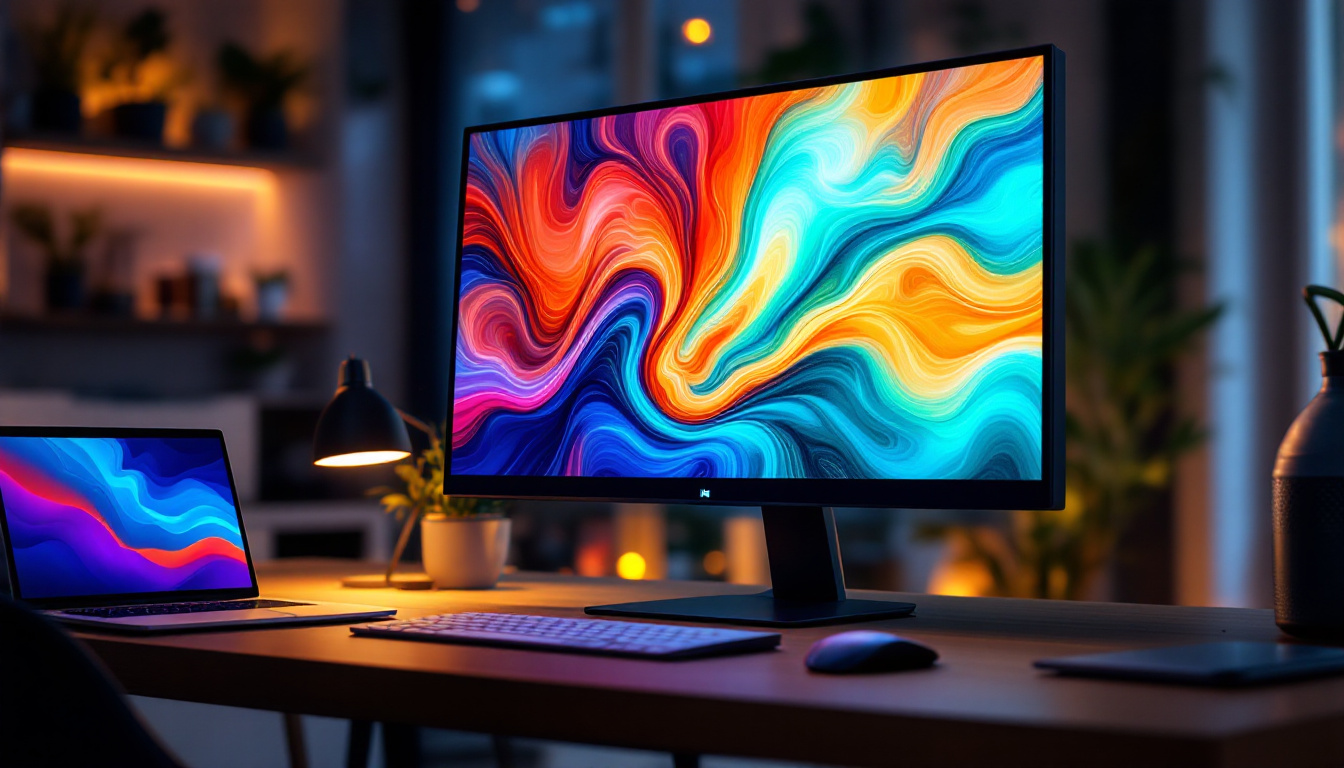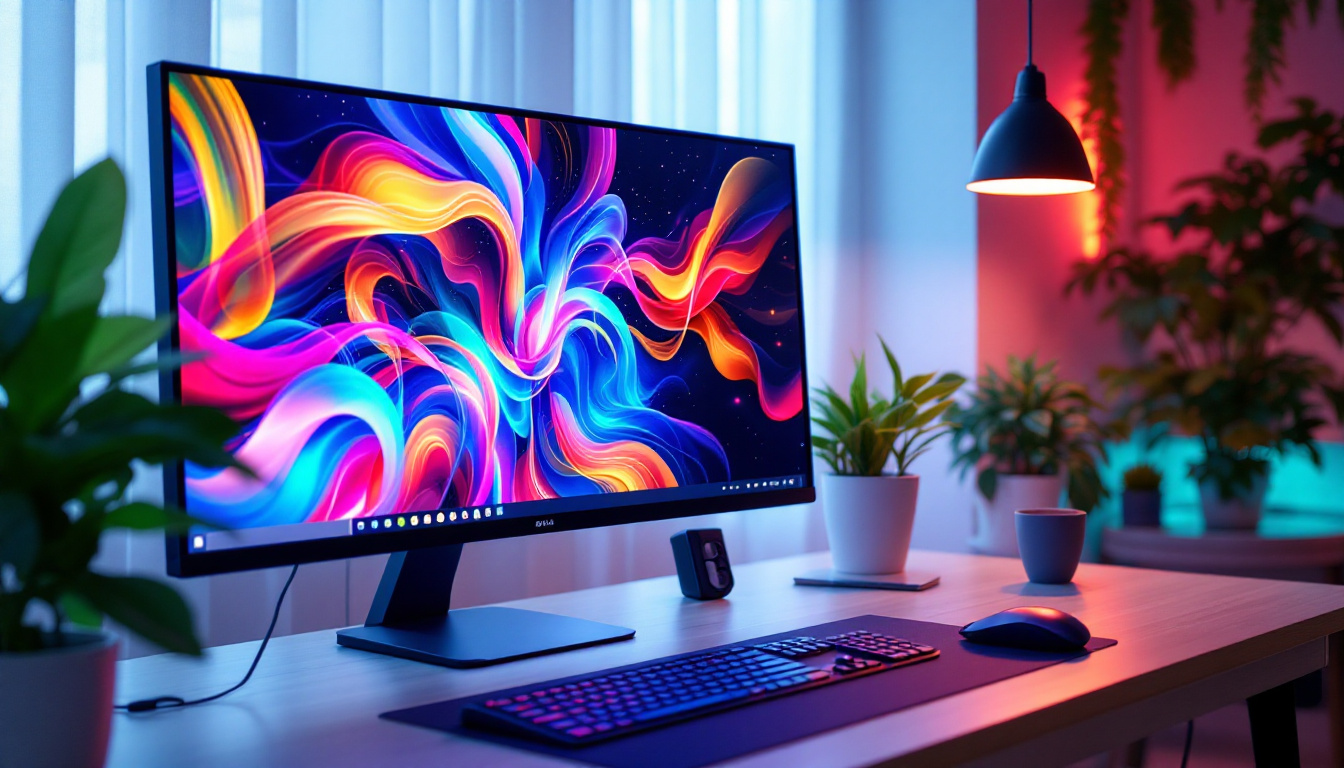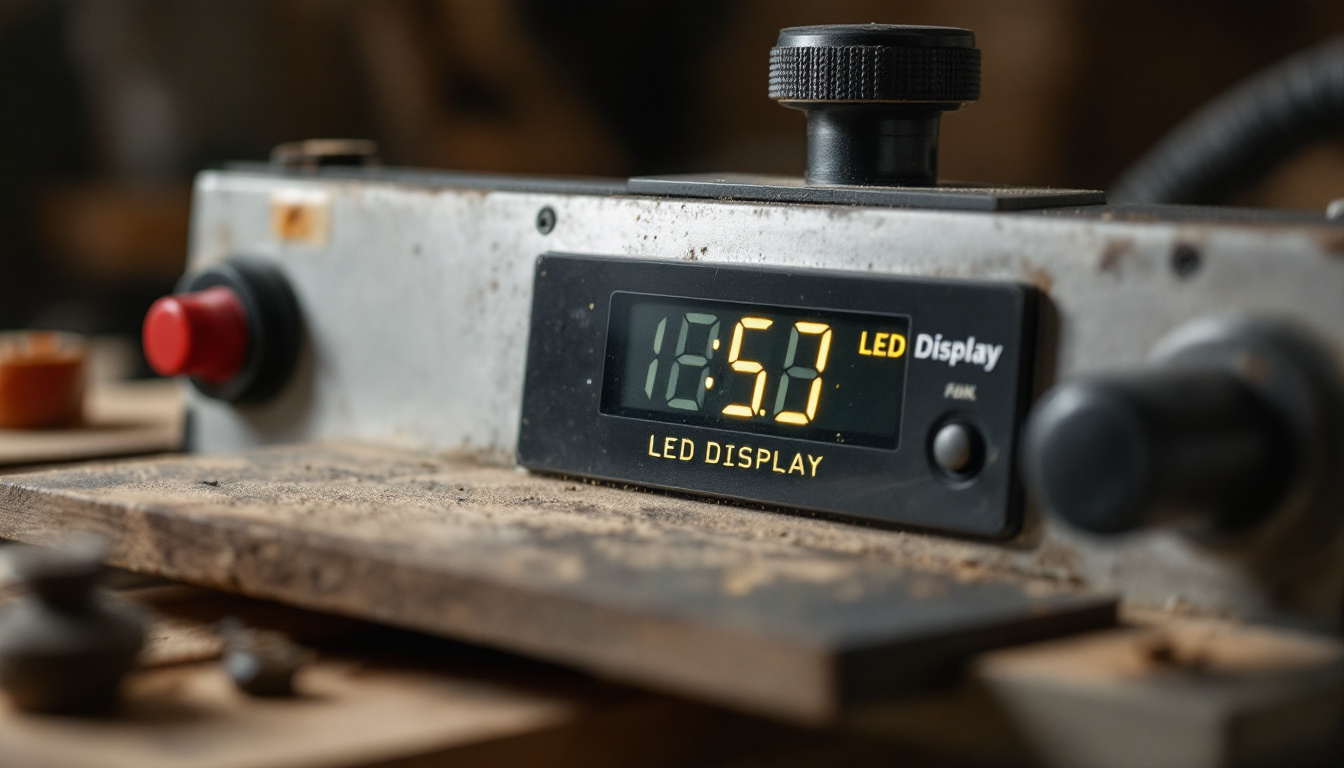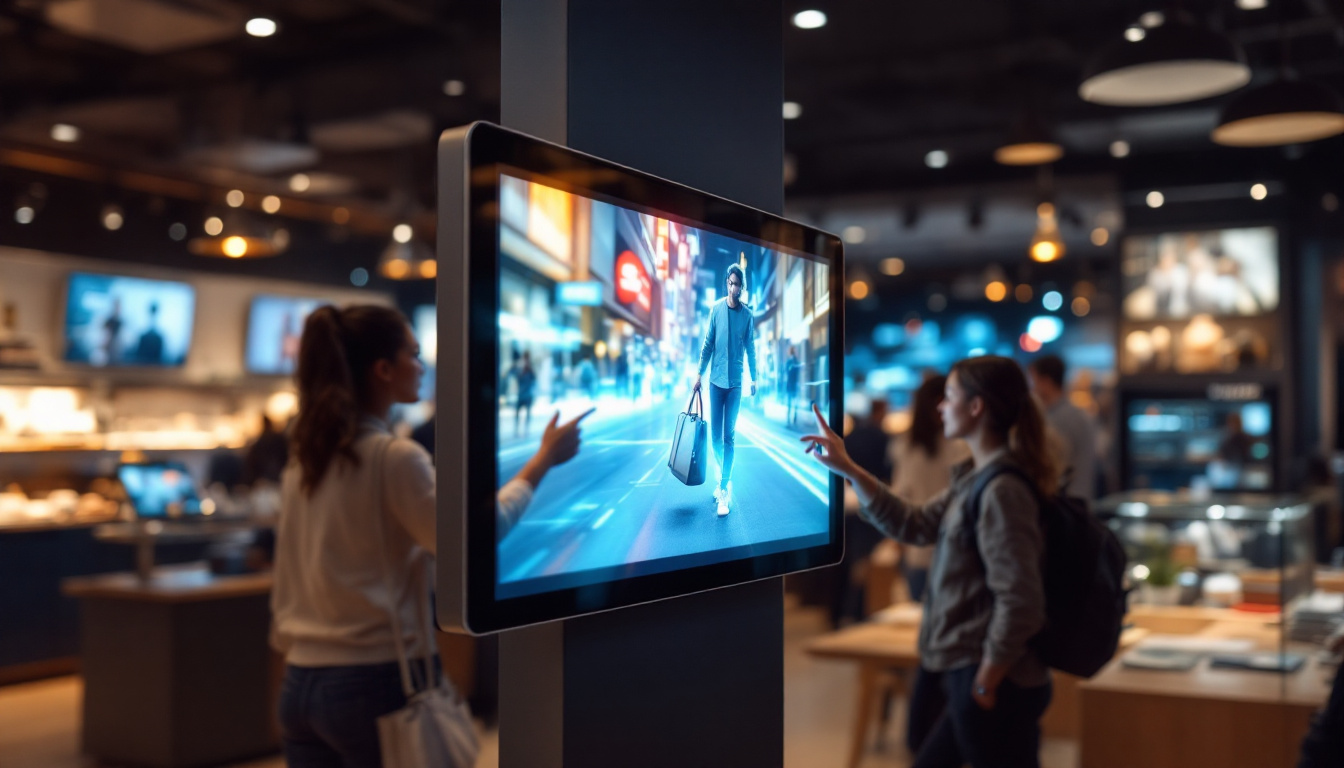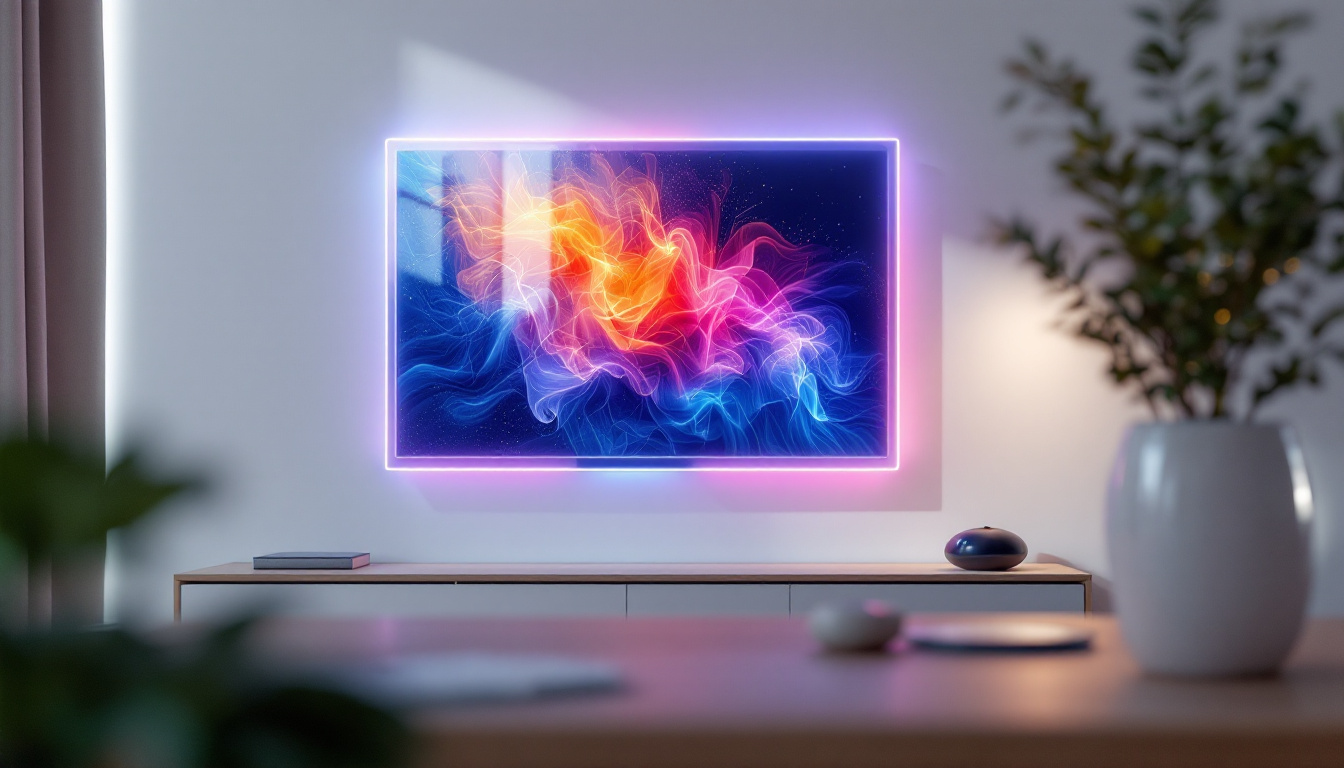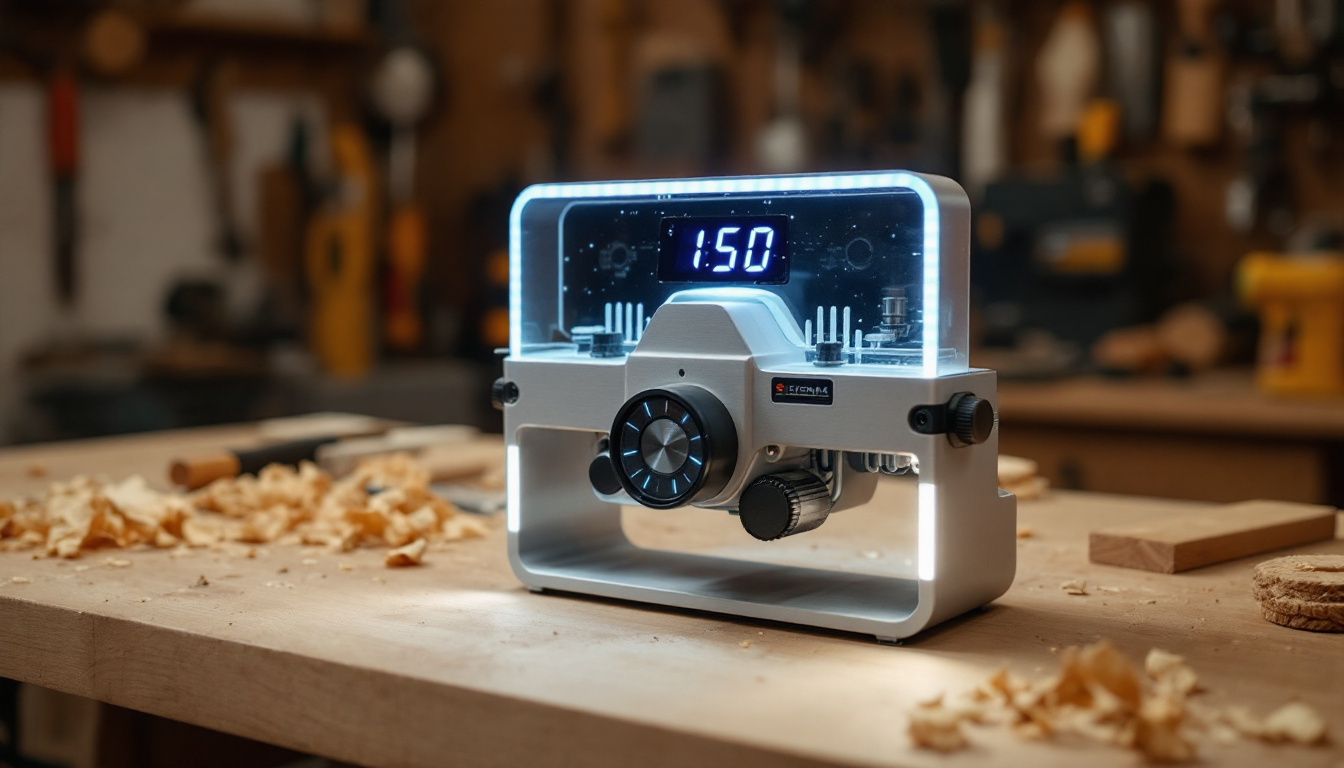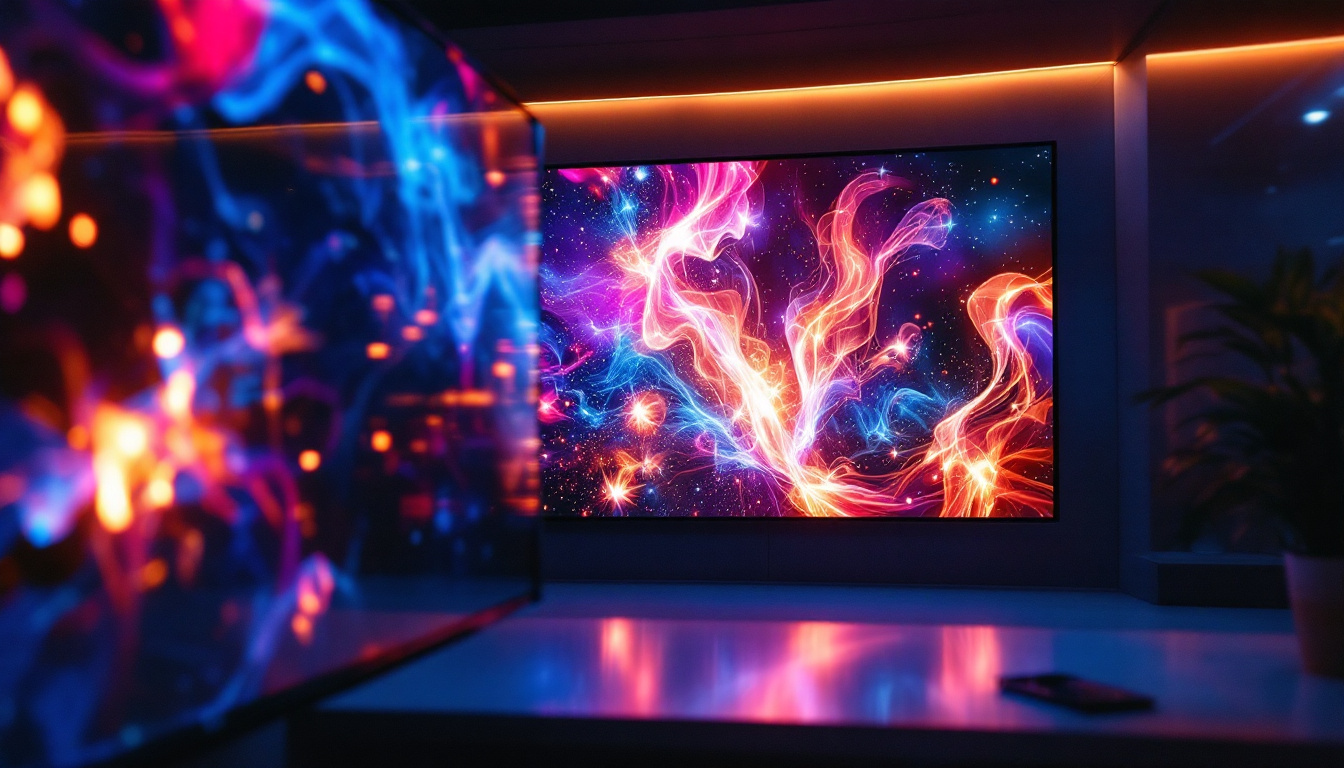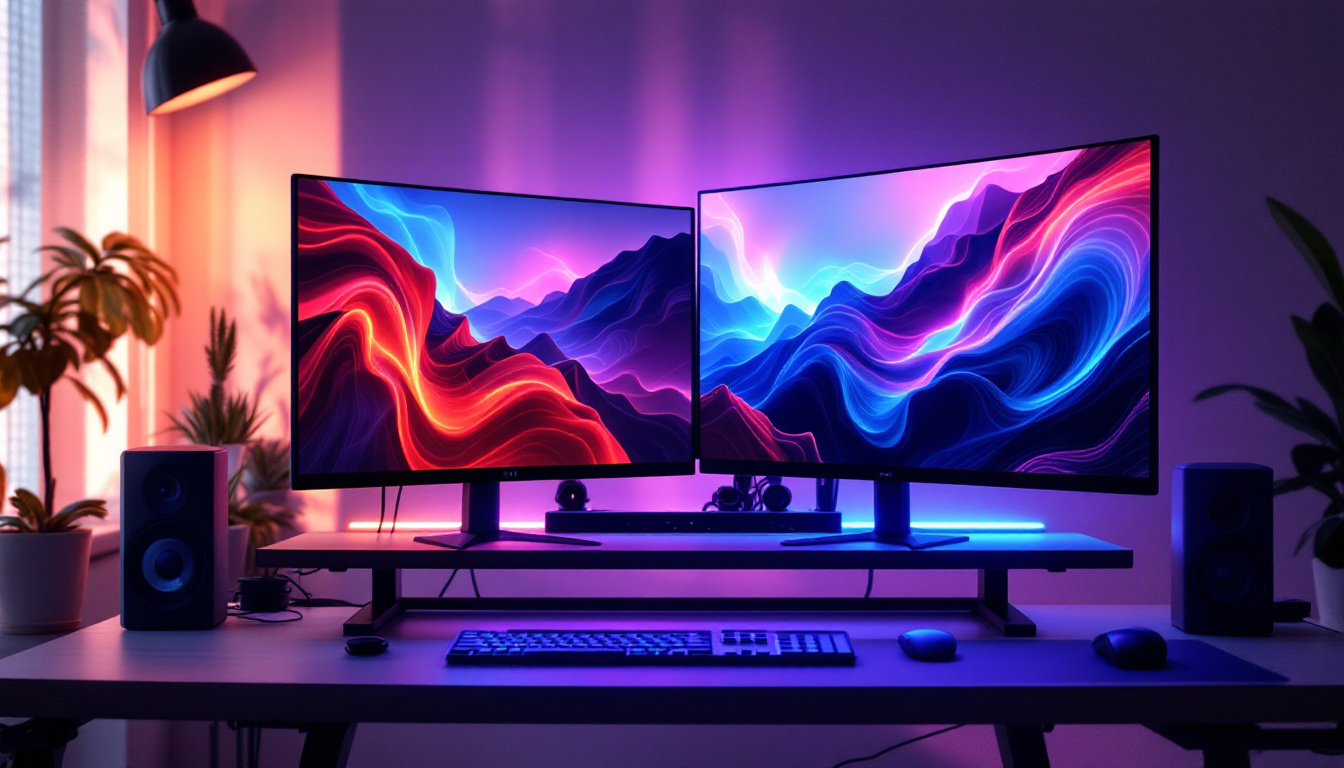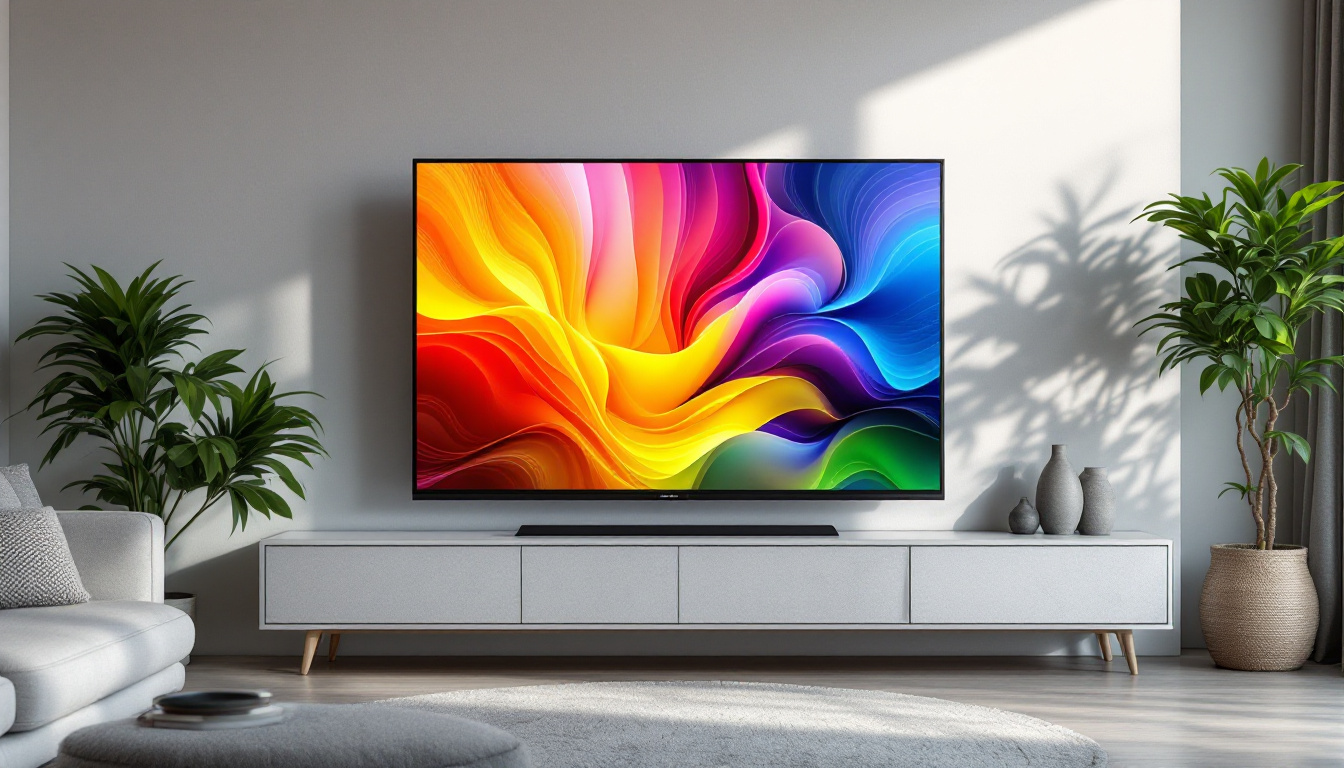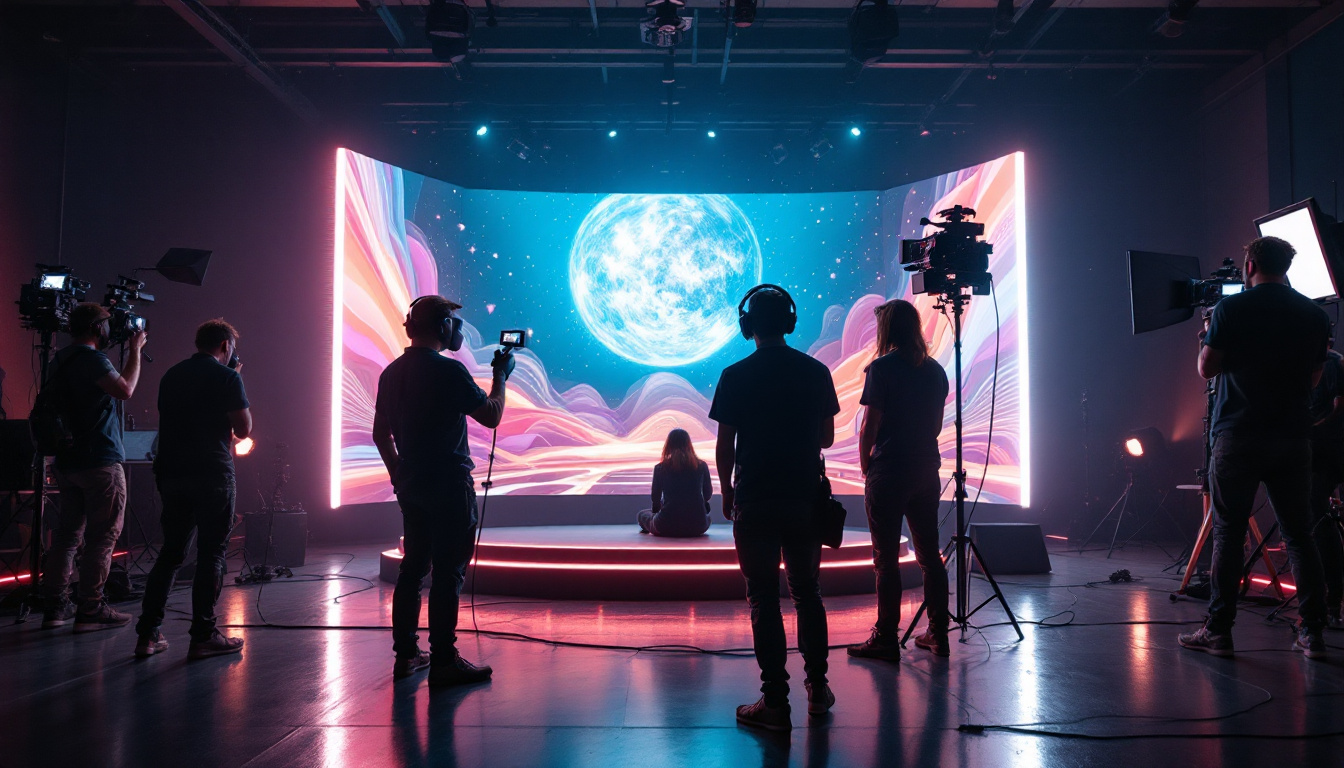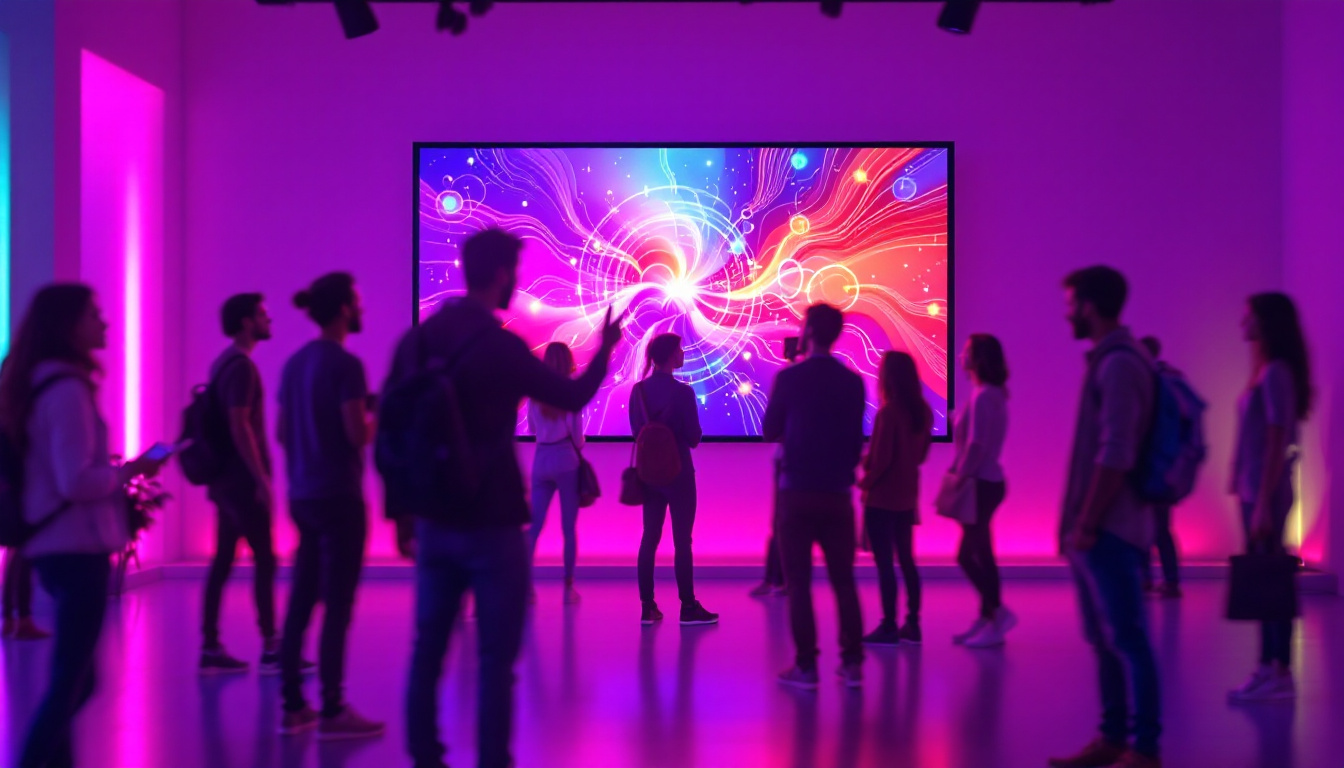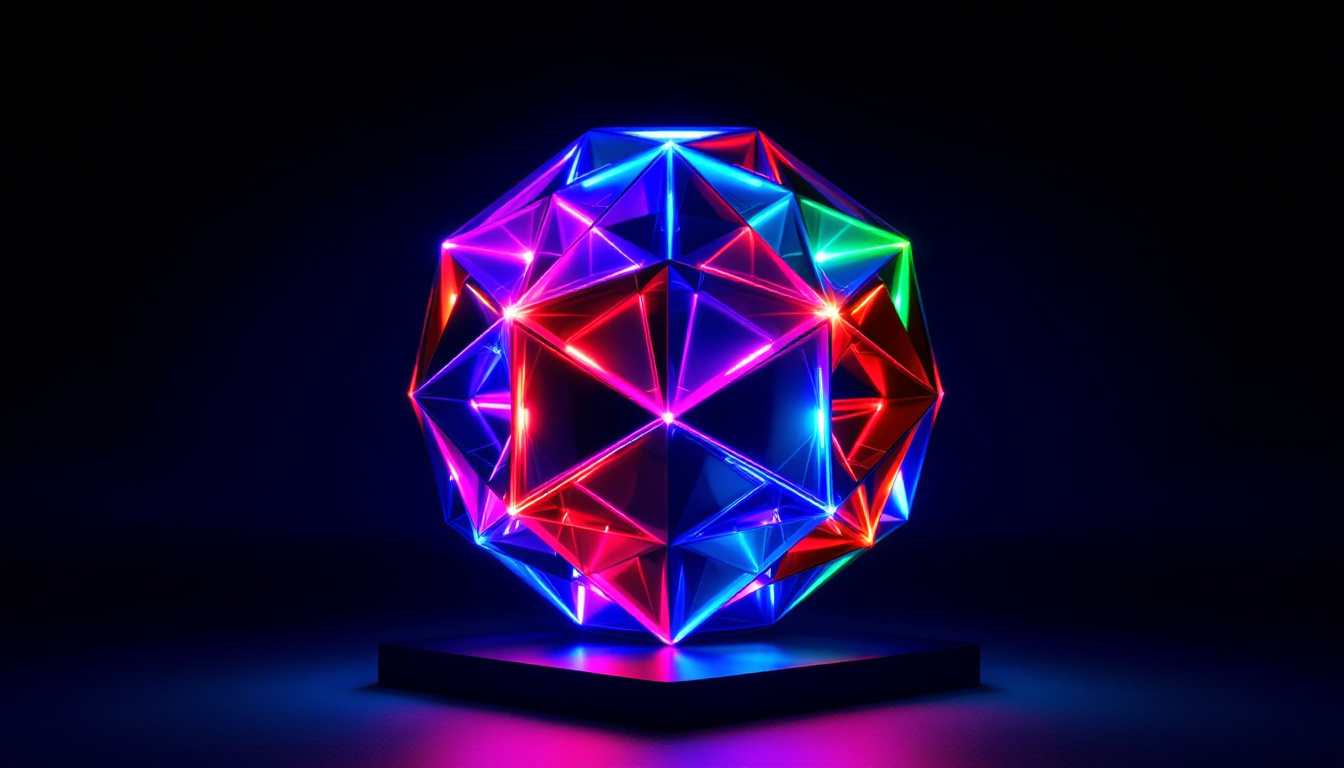Monitors With PC Built In: LED Display Explained
In the rapidly evolving world of technology, the integration of devices has become increasingly common. One of the most notable advancements is the emergence of monitors with built-in PCs. These innovative devices combine the functionality of a traditional monitor with the processing power of a computer, offering a streamlined solution for various applications. This article delves into the intricacies of these all-in-one devices, focusing on LED display technology, their benefits, and potential use cases.
Understanding LED Display Technology
LED, or Light Emitting Diode, technology has revolutionized the display industry. Unlike traditional LCD screens that rely on fluorescent backlighting, LED displays utilize tiny diodes to produce light, resulting in a brighter, more vibrant picture. This section explores the fundamental aspects of LED technology and its significance in monitors with built-in PCs.
The Basics of LED Technology
At its core, LED technology involves the emission of light from semiconductor materials. When an electric current passes through these materials, they emit photons, creating visible light. This process allows for greater energy efficiency and longer lifespans compared to older display technologies. Furthermore, LED displays can be designed to be thinner and lighter, making them ideal for compact devices like all-in-one monitors. The innovation behind LED technology has also paved the way for advancements such as organic LED (OLED) displays, which offer even deeper blacks and a wider color gamut due to their ability to light individual pixels independently.
Types of LED Displays
There are primarily two types of LED displays: edge-lit and backlit. Edge-lit displays have LEDs positioned along the edges of the screen, while backlit displays feature a grid of LEDs behind the screen. Backlit displays typically offer better color accuracy and contrast, making them suitable for tasks requiring precise visuals, such as graphic design or video editing. Additionally, a newer variant known as Mini-LED technology has emerged, which uses thousands of tiny LEDs to create more localized dimming zones, enhancing contrast and brightness even further. This technology is particularly beneficial for high dynamic range (HDR) content, allowing for a more immersive viewing experience.
Benefits of LED Displays
LED displays provide numerous advantages, including enhanced brightness, improved color accuracy, and lower power consumption. These features make them an attractive option for users who demand high-quality visuals without sacrificing energy efficiency. Additionally, the durability of LED technology ensures that these displays can withstand the rigors of everyday use, making them a reliable choice for both home and professional environments. The versatility of LED displays extends beyond just monitors; they are also widely used in televisions, signage, and even large-scale outdoor displays. This adaptability has made LED technology a cornerstone of modern visual communication, enabling vibrant advertising and information dissemination in public spaces. As technology continues to evolve, we can expect even more innovative applications of LED displays in various fields, from education to entertainment.
Monitors with Built-In PCs: A Comprehensive Overview
Monitors with built-in PCs are designed to eliminate the clutter of multiple devices while providing a powerful computing experience. These all-in-one solutions are particularly appealing for users with limited space or those seeking a minimalist setup. This section outlines the key features and functionalities of these innovative monitors.
Design and Form Factor
The design of monitors with built-in PCs is often sleek and modern, integrating the computer components seamlessly into the monitor frame. This compact form factor not only saves space but also reduces cable clutter, creating a cleaner workspace. Many models come with adjustable stands, allowing users to customize their viewing angles for maximum comfort.
Performance Specifications
Performance is a crucial aspect of any computing device, and monitors with built-in PCs are no exception. These devices often feature powerful processors, ample RAM, and sufficient storage to handle everyday tasks with ease. Depending on the model, users can expect specifications that rival traditional desktop computers, making them suitable for a wide range of applications, from office work to gaming.
Operating Systems and Software
Most monitors with built-in PCs run on popular operating systems, such as Windows or Linux, allowing users to access a vast array of software. This flexibility means that users can install and run applications tailored to their specific needs, whether for productivity, entertainment, or creative endeavors. Additionally, many models come pre-installed with essential software, further enhancing their usability.
Advantages of Monitors with Built-In PCs
The integration of a PC within a monitor offers several advantages that cater to different user needs. From space-saving designs to enhanced portability, these devices present a compelling case for those considering an upgrade or a new purchase. Below are some of the most significant benefits.
Space Efficiency
One of the primary advantages of monitors with built-in PCs is their space-saving design. By combining two devices into one, users can enjoy a clutter-free workspace. This is particularly beneficial for small offices, dorm rooms, or home setups where every inch counts. The streamlined design also makes it easier to transport the device if needed.
Cost-Effectiveness
Investing in a monitor with a built-in PC can be more cost-effective than purchasing a separate monitor and computer. Users can often find all-in-one solutions that provide the same performance as traditional setups at a competitive price. Additionally, the reduced need for peripherals, such as keyboards and mice, can further lower overall costs.
Enhanced Portability
For professionals who frequently travel or work in different locations, the portability of monitors with built-in PCs is a significant advantage. These devices are typically lightweight and easy to transport, allowing users to set up a workstation wherever they go. This flexibility is particularly appealing for remote workers and digital nomads.
Use Cases for Monitors with Built-In PCs
Monitors with built-in PCs are versatile devices that can cater to a wide range of use cases. From educational settings to creative industries, these all-in-one solutions offer unique advantages tailored to specific needs. Here are some common applications where these devices shine.
Education and Training
In educational environments, monitors with built-in PCs can serve as powerful teaching tools. They can be used for presentations, interactive lessons, and collaborative projects. The compact design makes them easy to move between classrooms or learning spaces, while the integrated PC allows for seamless access to educational software and resources.
Creative Workstations
For graphic designers, video editors, and other creative professionals, monitors with built-in PCs can provide the necessary power and display quality to perform demanding tasks. With high-resolution screens and robust performance specifications, these devices can handle resource-intensive applications, enabling users to work efficiently without the need for additional hardware.
Home Entertainment
In a home setting, monitors with built-in PCs can double as entertainment hubs. Users can stream movies, play games, or browse the internet without needing a separate computer. The high-quality LED displays enhance the viewing experience, making them an excellent choice for family movie nights or gaming sessions.
Considerations When Choosing a Monitor with Built-In PC
While monitors with built-in PCs offer numerous advantages, potential buyers should consider several factors before making a purchase. Understanding the specific needs and preferences can help ensure the right choice is made. This section outlines key considerations to keep in mind.
Performance Requirements
Before selecting a monitor with a built-in PC, it is essential to assess the performance requirements. Users should consider the types of tasks they will be performing, whether it be basic web browsing or more demanding applications like video editing. Evaluating the processor, RAM, and storage options available can help ensure the device meets the necessary performance standards.
Display Quality
The quality of the display is another critical factor. Users should look for monitors with high resolution, good color accuracy, and adequate brightness levels. Additionally, features such as anti-glare coatings and adjustable viewing angles can enhance the overall user experience, particularly in diverse lighting conditions.
Connectivity Options
Connectivity is vital for any computing device. Monitors with built-in PCs should offer a variety of ports and wireless options to accommodate different peripherals and accessories. HDMI, USB-C, and audio ports are essential for connecting external devices, while built-in Wi-Fi and Bluetooth capabilities can enhance the device’s versatility.
Future Trends in Monitors with Built-In PCs
The technology landscape is constantly evolving, and the future of monitors with built-in PCs looks promising. As advancements continue to emerge, these devices are expected to become even more powerful and versatile. This section explores potential future trends in this innovative market.
Increased Performance and Efficiency
As technology progresses, monitors with built-in PCs are likely to feature even more powerful processors and improved energy efficiency. This could lead to enhanced performance for demanding applications while reducing power consumption. Users can expect devices that can handle multitasking and resource-intensive tasks with ease.
Enhanced Integration with Smart Technologies
The integration of smart technologies into monitors with built-in PCs may also become more prevalent. Features such as voice control, smart assistants, and seamless connectivity with other smart devices can enhance user experience and functionality. This trend could transform how users interact with their devices, making them more intuitive and user-friendly.
Focus on Sustainability
As environmental concerns continue to grow, manufacturers may prioritize sustainability in the production of monitors with built-in PCs. This could involve using eco-friendly materials, implementing energy-efficient technologies, and designing devices for recyclability. Consumers are increasingly looking for products that align with their values, and sustainability will likely play a significant role in future developments.
Conclusion
Monitors with built-in PCs represent a significant advancement in technology, offering a unique blend of performance, efficiency, and convenience. With their space-saving designs and powerful capabilities, these all-in-one devices cater to a wide range of user needs, from education to entertainment. As technology continues to evolve, the future of monitors with built-in PCs looks bright, promising even greater innovations and enhancements. For anyone seeking a versatile and efficient computing solution, these devices are worth considering.
Discover LumenMatrix’s Innovative LED Display Solutions
Ready to elevate your visual experience with the latest in LED technology? LumenMatrix is at the forefront of creating immersive and dynamic visual displays that transform any space. From vibrant Indoor LED Wall Displays to robust Outdoor LED Wall Displays, and from sleek LED Poster Displays to interactive Floor LED Displays, our solutions are designed to captivate and engage. Whether for advertising, entertainment, or information dissemination, LumenMatrix’s mission is to revolutionize visual communication with displays that deliver your message with unparalleled impact. Check out LumenMatrix LED Display Solutions today and see how we can enhance your brand visibility and create captivating visual experiences.

